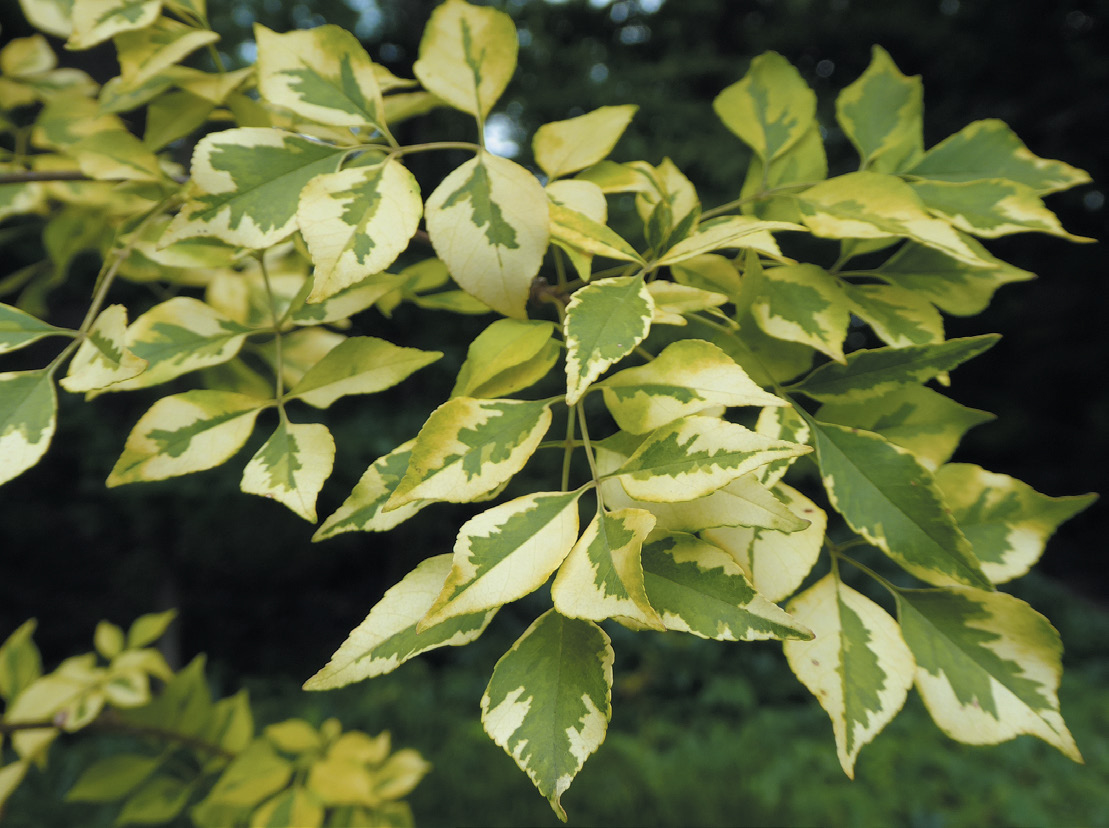Fraxinus bungeana, Bunge ash, is a plant that challenges one’s preconception of a genus because, unlike other ashes, this Chinese native is a shrub with showy flowers instead of a tree with inconspicuous flowers. It belongs to a group known as the flowering ashes, which includes the better-known F. ornus along with the Asian F. sieboldii and F. chinensis. Its flowers and form are more reminiscent of its oleaceous cousins, Syringa (lilac) and Chionanthus (fringetree), than they are of familiar members of its own genus. This species has been cultivated in botanic gardens since the late 1800s, but has never significantly jumped the fence into general horticulture.
Fraxinus bungeana is native to north-central China, where it grows in dry sandy soils and rock crevices. It was first collected by intrepid Russian plant collector Alexander von Bunge in 1831 on one of his explorations of Siberia, Mongolia, and Beijing. It was subsequently given its species name by botanist Alphonse de Candolle in 1844. Additional herbarium records appear throughout the latter half of the eighteenth century, but the first known seed introduction into North America was to the Arnold Arboretum in April 1880 from the Muséum National d’Histoire Naturelle, in Paris. A second collection was received by the Arboretum in January 1882, from Emil Bretschneider, a physician and botanist who explored the plains and mountains surrounding Beijing. Remarkably, one plant (accession 14625*A) from this collection is still alive, located in the ash collection on the east side of Bussey Hill. As of July 2017, this tree had a height of 12 feet (3.7 meters) and spread of 16 feet (4.9 meters).
The next wild collections after Bretschneider’s were those of the USDA’s explorer, Frank Meyer, who collected seeds in late 1907, again in and around Beijing. As far as can be determined, none of Meyer’s plants remain alive. Meyer aptly described it as, “an ash growing in rocky situations and on steep mountain sides. Attains, apparently, no great size. May be of use as a foresting plant in semiarid regions.” In light of the spread of emerald ash borer, and as part of recent efforts to increase the diversity of ashes in the United States, collections of F. bungeana seeds were made in 2009 by Kang Wang, Beijing Botanical Garden, in Liaoning, Hebei, and rural Beijing municipality, and the following year by Kang Wang, Michael Dosmann (Arnold Arboretum), and I, near Beijing, as part of the 2010 North America-China Plant Exploration Consortium expedition (collections NACPEC10-039 and NACPEC10-042).
Citation: Aiello, A. S. 2017 Fraxinus bungeana: An ash of a different color. Arnoldia, 75(2): 32–33.
Bunge’s ash is a large shrub, growing 6 to 15 feet (1.8 to 4.6 meters) tall. The plants from which we collected in China in 2010 were 3 to 6 feet (0.9 to 1.8 meters) tall. As mentioned above, it has small, terminal flower panicles with small white fine-petaled corollas that resemble those of fringetree. Alfred Rehder, in his Manual of Cultivated Trees and Shrubs, described it as a “distinct species, handsome in bloom.” This year I noticed seed production for the first time on one plant at the Morris Arboretum. Fall foliage color is at best similar to forsythia, with purple overtones fading to yellow. As with other ashes, Bunge ash prefers full sun, and seems adaptable to a range of soil pH. It clearly can tolerate dry conditions but also thrives in rich soils. It is likely cold hardy through USDA Zone 5 (average annual minimum temperature -10 to -20°F [-23.3 to -28.9°C]).
Cultivar description: Fraxinus bungeana ‘Sunflash’

Growing plants from seed can result in a great amount of variation, providing the opportunity to select for vigor and health and, occasionally, to find novel plants. This was the case in September 2014 when I first noticed a variegated plant among a group of seedlings from the NACPEC10-042 Fraxinus bungeana collection (Morris Arboretum accession number 2010-213*A). This plant, which has not flowered yet, has a growth rate and habit similar to others collected in 2010, but differs in having leaves that are patterned with a mixture of green, yellow, and cream. This variegation has been consistent since it was first observed and persists throughout the season. We are currently working on propagating this individual for further distribution.
Anthony S. Aiello is the Gayle E. Maloney Director of Horticulture and Curator at the Morris Arboretum of the University of Pennsylvania in Philadelphia.
From “free” to “friend”…
Established in 1911 as the Bulletin of Popular Information, Arnoldia has long been a definitive forum for conversations about temperate woody plants and their landscapes. In 2022, we rolled out a new vision for the magazine as a vigorous forum for tales of plant exploration, behind-the-scenes glimpses of botanical research, and deep dives into the history of gardens, landscapes, and science. The new Arnoldia includes poetry, visual art, and literary essays, following the human imagination wherever it entangles with trees.
It takes resources to gather and nurture these new voices, and we depend on the support of our member-subscribers to make it possible. But membership means more: by becoming a member of the Arnold Arboretum, you help to keep our collection vibrant and our research and educational mission active. Through the pages of Arnoldia, you can take part in the life of this free-to-all landscape whether you live next door or an ocean away.

